Imagine logging onto your favorite eCommerce site and being greeted by a friendly message, welcoming you to the store.
You begin browsing. You’re not entirely sure what you want, but Mother’s Day is coming up, and you’ve been trying to find that perfect give for your mom.
After a few minutes of searching, another message pops up, asking if you need help finding anything.
You type a reply: “I’m looking for a mother’s day gift.”
A response comes back immediately: “??? I love picking out gifts! May I help you find something?” It includes buttons for either yes or no. You click yes.
You’re asked a few questions about your mom’s personality and then shown a few different gift ideas, 2-3 of which are actually pretty perfect for her. You select the gift you want and complete your purchase, all without ever leaving the chat screen. ?
You just experienced conversational commerce.
In this post, we’ll cover conversational commerce, how it works, and share examples of how to use it in your eCommerce marketing. We’ll also provide some insight on how to choose the right chatbot platform for you.
Keep reading; it’s going to be fun. ?
What is Conversational Commerce?
When we talk about conversational commerce today, we’re talking about automated technology, usually involving artificial intelligence, that helps online shoppers and brands connect with each other through chat and voice. This includes everything from email marketing to customer feedback.
More and more eCommerce retailers are using chatbots to simulate the in-store experience of having a sales assistant available to help visitors at each step of their shopping experience.
And, with the growth of messaging apps, chatbots have enormous reach. As of early 2017, global monthly active users of the top 4 messaging apps surpassed users of the top 4 social networks:
Additionally, more than 40 million people owned a smart speaker (like the Amazon Alexa or Google Home) in 2017 with that number expected to double in 2018.
How Conversational Commerce Works
Conversational commerce works just like the best optins and marketing should, through event triggers, knowing your customers and their spending habits, and constant review and analysis of your own site’s analytics.
It has recently been built on artificial intelligent advancements, but the chatbots engaging in conversational commerce with our customers aren’t meant to replace human-to-human interactions just yet. Maybe by 2020 if Gartner Research is right in their project that chatbots will be handling about 85% of customer service by that time.
Right now, though, chatbots are around to be there when a warm body can’t be; we are still the ones who write the rules they have to follow and the scripts they must read. For their part, they fill a need in conversational marketing in a way that is real-time, data-driven, personalized, and scalable.
Why Use Conversational Commerce?
Conversational commerce is about more than just keeping up with trends, though that is an added bonus.
This may sound odd since we’re talking about using a computer to engage with our customers, but conversational commerce should be about providing a better, more personalized user experience.
Ultimately, using tools like chatbots to engage with our customers should add to their experience, not detract from it. And, when used correctly, that’s exactly what it does.
On top of that, it also benefits you!
1. Direct Line to Your Audience
When you’re present on messaging platforms you’ll naturally be where your customers are. As we mentioned earlier, messaging app usage has surpassed that of social network usage, so when you reach out to customers via Facebook Messenger with an ad they’re more likely to see it than a standard Facebook ad.
Chatbots offer you a direct line to your shoppers and, importantly, give them a direct line to you.
Shoppers who don’t get enough support during their experience are way less likely to buy something.
Think about our story at the beginning of this article. What if our chatbot hadn’t popped back in to check on you while you’d been shopping? Would you have stuck around, browsing aimlessly?
No way.
You would’ve bounced and gone to another site where you’d either found what you wanted on your own or another, more helpful chatbot had found it for you.
Chatbots can provide proactive support like that you’d find in a brick-and-mortar store and help the customer along in their customer journey.
2. Cost and Time Effective
Chatbots are both cost and time effective. They can help out with simple customer questions while humans are tackling the more complex stuff.
And, a single chatbot can handle nearly an unlimited amount of interactions all at once. Humans… not so much. Fortunately, what we lack in multitasking capabilities we more than make up for in cognitive reasoning.
Bots can also be up and running 24/7. Human support can be too, but there are much greater costs to take into account for staffing customer support around the clock.
Are we saying that chatbots are a replacement for humans? Again, no. We are saying that chatbots can be incorporated into your service and marketing strategies to increase their effectiveness and return and make everyone happier.
3. Lead Generation
Conversational commerce doesn’t have to be solely about making the sale. Not directly.
Casper Mattresses created Insomnobot-3000, a quirky little chatbot that you can text with when you can’t sleep.
This is an excellent example of how chatbots can be used for lead generation. Casper not only receives a potential customer’s mobile number, but they’re also getting text messages that contain a goldmine of psychographic data.
With better, more complete information about your potential customers, you can create targeted marketing campaigns that include high-converting personalization techniques like including your lead’s name, location, or recommending a product they’ll probably like.
Conversational Commerce Examples
Are you ready to see conversational commerce in action? Here are some ways you can use conversational commerce to engage with your customers.
Connect With the Customer on Facebook Messenger
If you haven’t seen our Facebook Messenger Marketing tutorial, you need to check it out! You can create a great popup to send your website users to Messenger:
This tutorial came to us as a request from one of our customers who was looking for ways to drive their own customers from their website to their Facebook page where they actually had the ability to engage with them.
When the business is open, customers can engage with employees in real time, but after business hours you can set up your chatbot to handle simple questions and requests.
Chat with the Customer From the Online Store
You can use this approach to automate responses to customer questions about sales and specials, products, or any other steps in the customer journey.
Customers can also be connected to a human if they need support with a more complex issue.
Recover an Abandoned Cart
Nobody likes abandoned carts. A great step toward recovering them is reducing abandoned carts to begin with. But, when that doesn’t work there’s abandoned cart recovery emails and messages.
You can write your bot to give shoppers the option to click a button to go back to the checkout page or to check out right in the chat screen. You can even give them options to ask a question or get a reminder the next day.
Confirm the Customer’s Order
Customers expect to be notified of their purchase pretty much as soon as they press the “Complete Purchase” button.
Sending notifications in messaging apps like Facebook Messenger keeps them updated and lets them request future updates related to their order that they know aren’t going to end up in their email’s spam folder.
Notify the Customer That Their Order has Shipped
Every shopper moments after we receive notification our order has shipped:
We love knowing where our things are. Instead of letting your customers wonder, why not show them that you’re on top of it with a shipping confirmation?
This confirmation is great because it gives customers the option to view their order, track the shipment in case it’s been a bit longer than it should, or shop for more items.
You could make this even better by adding another “Is there a problem?” or “Have a question?” button. Or, maybe send another message a few days later asking the customer to confirm that their shipment did arrive.
Create a Positive User Experience
You can use conversational commerce to create a positive user experience just to generate some goodwill between you and your customers. This is a really easy way to add a personal touch. If the customer comes back with a question that your chatbot can’t handle, one of your human associates will be able to get it.
Chatbots give you the chance to be a bit more informal and personal than even email communications. While emoji have only recently found their way into email subject lines, people almost expect stickers, emoji, and GIFs in messenger app messages.
Ask for a Product Review
Product reviews are so important to increasing social proof and, by extension, conversions. You can use conversational commerce platforms to easily get more reviews.
Ask for things that can be answered easily from a mobile phone:
- Satisfaction with product or shopping experience on a scale (1 to 5, 1 to 10, etc.)
- Picture or video of the customer using the product
- Shoutout on social media using a specific hashtag
- Short review
- Video testimonial
Choosing the Right Conversational Commerce Platform
Before you jump in and invest lots of time and money in the chatbot platform with all the bells and whistles, take some time to really think about 2 things:
- What do you need?
- How much can you spend?
1. What do you need?
Do you need a platform that has the most advanced AI out there, or something that just lets you set up simple rules and response buttons?
Do you need to embed on a website or mobile app, or will your chatbot find its home on a site like Facebook?
Are you tech-savvy enough to use the chatbot?
2. How much can you spend?
The answers to question #1 are going to determine how much your chatbot platform will cost you. Generally, here’s how things shake out:
More advanced AI = increasing costs
More distribution (places to embed the chatbot) = increasing costs
Less knowledge to use/work on your part to operate = increasing costs
To give you an example of how this plays out, let’s take a look at a few conversational commerce platforms and how they compare in cost.
Facebook Messenger
Facebook for Developers has a quick start tutorial for creating your first native messenger bot. If you are super tech-inclined this may be the route for you.
Here’s just one example of the awesome things you can do with Facebook’s native messenger bot:
You will be doing 100% of the coding to create your chatbot with this option, which means that you have complete control over the functionality of your chatbot.
It also means that you may struggle with getting the results you’re looking for unless you’re a developer or you hire one.
Cost to build: Free
BotFuel
BotFuel offers a simple build interface with minimal coding required.
A platform like this, with more visual-aided design and less coding, is going to be easier to use. You’re going to end up sacrificing some control over functionality because of the increase in simplicity, of course.
Also, since more work has gone into the platform on the back end, you’re going to be paying for that on the front end.
ChatFuel
Builders like ChatFuel and ManyChat are even easier and more simplified than BotFuel and require no coding at all.
If you’re looking for something between Facebook’s native bot and hiring a company to do it for you, this is a great place to land.
Cost: Pro starts at $15/month
Chatbot Agencies
If you just want a chatbot and you don’t care who does it, you just want it to work and be awesome, there are agencies that specialize in their creation. They’re going to be the most expensive option and you’re going to have the least amount of control.
Cost: Quote required
Whew! There you have it. Now you know just about everything there is to know about conversational commerce in 2018. How do you feel about it? Are you excited to start using chatbots? We want to know your thoughts.
Also, if you liked that Facebook Messenger tutorial, there are so many more cool things you can do with OptinMonster. Join us today and have some fun.






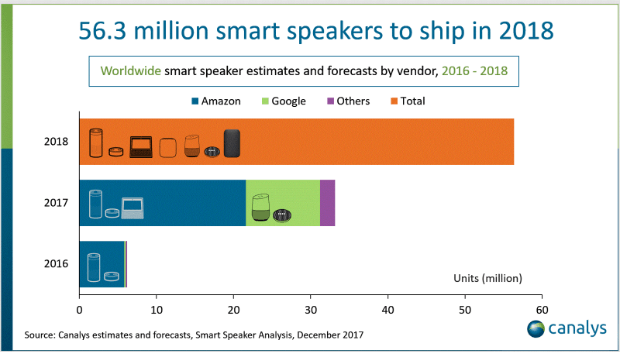



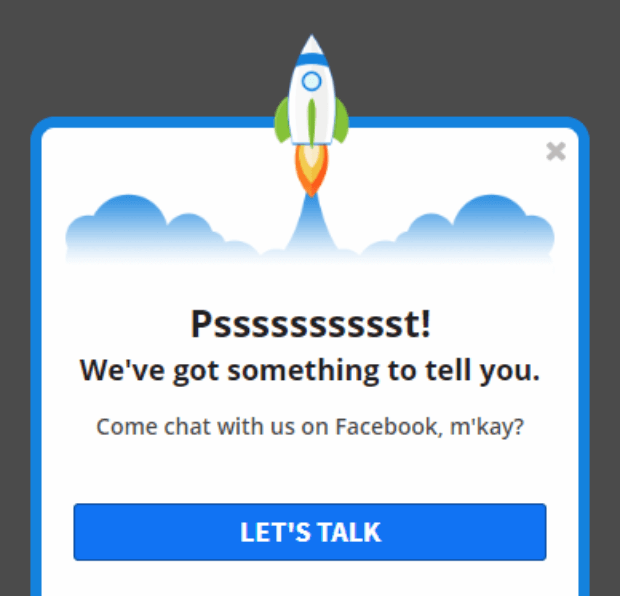
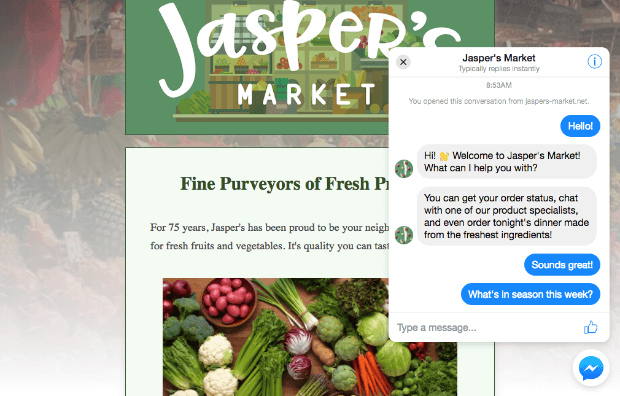

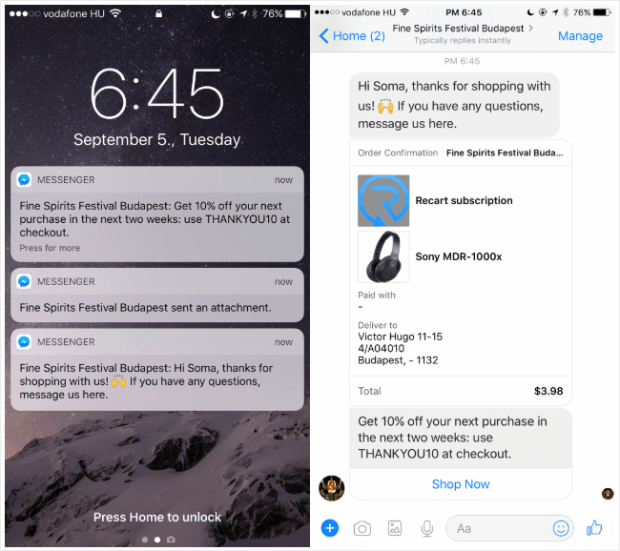

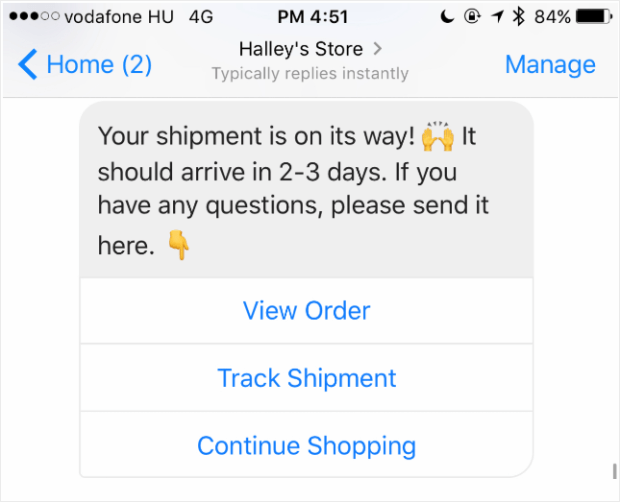
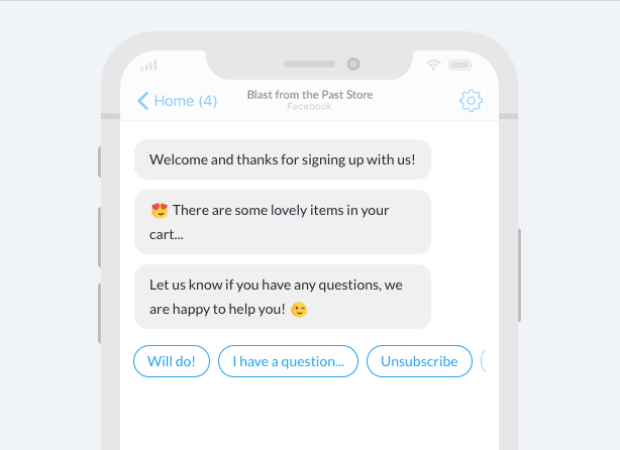
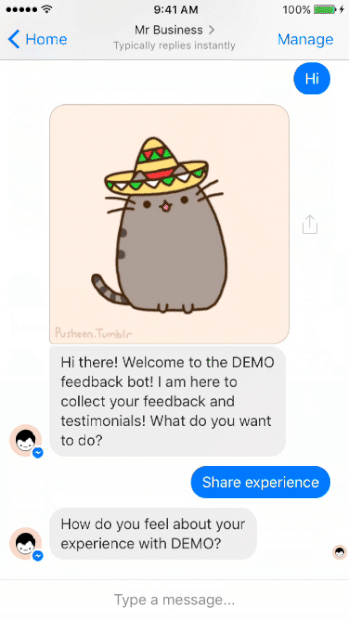
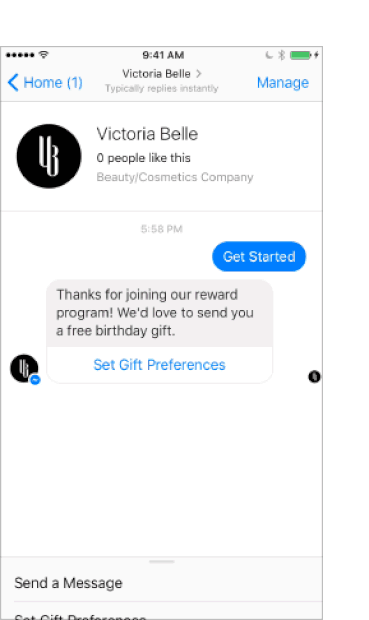










Add a Comment